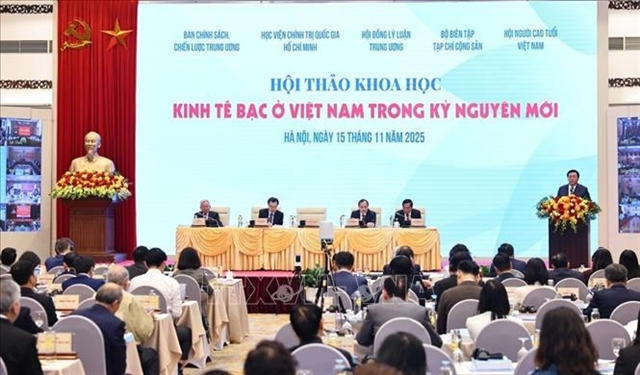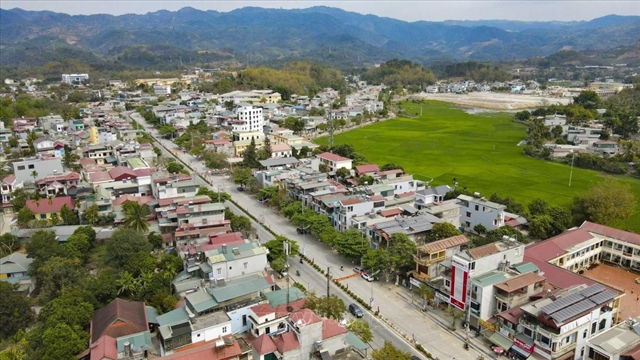 Opinion
Opinion

 |
| Staff at a customer care centre where information is received and customers are guided on using the online services of the electricity sector. — VNA/VNS Photo |
Ngô Hải Phan, Director General of the Việt Nam Government Office's Administrative Procedure Control Department, speaks to Vietnam News Agency about the National Public Service Portal after four years of operation.
Can you evaluate the results of the National Public Service Portal (NPSP) since it was implemented?
In recent years, the Government has implemented various solutions to enhance the quality of administrative procedure resolution. Providing online public services for citizens and businesses is a crucial and groundbreaking measure in promoting the national digital transformation, meeting the requirements of the fourth industrial revolution. NPSP was built and officially launched in December, 2019. It has become the digital single window of the country, serving citizens and businesses in carrying out administrative procedures and delivering public services in the digital environment.
At the portal, 4,591 online public services out of a total of 6,349 administrative procedures are integrated and provided. It has garnered more than 3.2 billion visits for looking up information and service utilisation, handling 36.8 million online administrative procedure records and 21.2 million online payment transactions. On average, it receives over 106,000 online applications and 50,000 online payment transactions daily.
The integration and provision of public services on NPSP require ministries, sectors and localities to actively restructure procedures, resolve administrative processes in the electronic environment based on data exploitation and reuse. This aims to reduce and simplify administrative procedures, facilitating citizens and businesses in carrying out administrative procedures conveniently, simply and reducing costs and time.
As a result, many public services on the portal have generated a large number of records, such as promotion announcements, accommodation notifications and new electricity connections from low-voltage power grids.
One notable result is that the shared platforms and software of NPSP have been developed for ministries, sectors and localities to apply in receiving and resolving administrative procedures, providing public services, helping save costs and avoiding waste in investments, enhancing efficiency.
The portal has connected and integrated with 150 information systems and databases of various agencies and units. Through the portal, information in the process of administrative procedure resolution nationwide is public and transparent, facilitating citizens to monitor, supervise and assess the quality.
Among them, the evaluation system of serving people and businesses helps control the process of handling administrative procedures, providing fair services with real-time data, enhancing administrative discipline and rigor, responsibility for explanation, and individualising responsibility to agency, unit, officer, civil servant, public employee and labourer.
The results achieved are undeniable, but there are still complaints about the complicated and inconvenient implementation of administrative procedures on NPSP. What are your thoughts on this?
It is true that there are still some issues in the process of handling administrative procedures and providing online public services on the portal. Increasing the number of online records in some agencies does not truly address the service level, as many online public services do not ensure a satisfactory level of service and lack attention to process restructuring and user experience, making them not genuinely convenient, simple and sometimes even more time-consuming and complicated than direct implementation. Additionally, there is a lack of interactive form design and support for pre-filled information.
The digitisation, enrichment, and cleansing of data in some ministries, sectors, and localities are slow, without a clear roadmap and plan. In some agencies, the digitisation efforts mostly stop at scanning from paper to electronic format, failing to ensure legal value and reusability while wasting resources on digitisation and storage.
The connectivity, sharing, and data interoperability among ministries, sectors, and localities are still very limited. Transparency, especially in the process of handling administrative procedures in some agencies, is also restricted. Nationally, the transparency of the process of receiving and handling administrative procedures at the local level has only reached 43 per cent, with ministries and sectors achieving 66 per cent in the total administrative procedure files.
Although there has been an improvement in the quality of handling administrative procedures compared to 2022, the rate of correctly or timely resolving administrative procedure files in some ministries and localities remains low, especially within the administrative block where the rate in 2023 was only 52.5 per cent, falling far below the government's requirement of at least 90 per cent.
Furthermore, support for citizens and businesses from some agencies is still slow. The habits, psychology, and digital skills of some people have not yet met the requirements. Technology systems for information security and safety have not been adequately invested, synchronised, or effective in some ministries, sectors and localities.
What needs to be done in the future to continue improving the service quality?
Firstly, it is necessary to continue adhering to the principle of "placing citizens and businesses at the centre", promoting human factors, reforming leadership, and utilising supporting technologies to promote collaboration and participation in the management, development and operation of the portal.
Secondly, there needs to be a focus on reviewing and restructuring processes, reducing complexity and simplifying administrative procedures based on electronic interoperability and data reuse.
In 2024, the emphasis should be on implementing online public services that are interoperable among various agencies and units, with significant user groups and frequencies. This effort aims to overcome "bottlenecks" in connectivity, sharing, reuse and data interoperability to facilitate the resolution of administrative procedures, providing public services to citizens and businesses, and reducing the actual burden of procedures, time, and costs.
Thirdly, there should be a concentration on digitisation, data cleansing and linking digitisation to the tasks performed by officials in the process of receiving and resolving administrative procedures. The reuse of digitised documents and results of administrative procedure resolution between ministries, sectors and localities should be promoted through data connection and sharing with the personal and organisational data management warehouse on NPSP.
The completion of data connection, sharing, and synchronisation among national databases, specialised databases, and information systems providing centralised public services, managed by ministries and sectors, with NPSP and the administrative procedure resolution information system at the ministerial and provincial levels is essential to facilitate the resolution of administrative procedures and provide public services.
Fourthly, there is a need to enhance transparency and publicity. All administrative procedure records of ministries, sectors, and localities must be synchronised with NPSP to enable citizens and businesses to monitor and evaluate the implementation process.
Additionally, it is crucial to strengthen the accountability of the leaders of agencies and units and enforce administrative discipline strictly.
Lastly, there should be promotion, guidance, and support for citizens to enhance digital skills, along with policies encouraging citizens and businesses to proactively and effectively use online public services. — VNS




